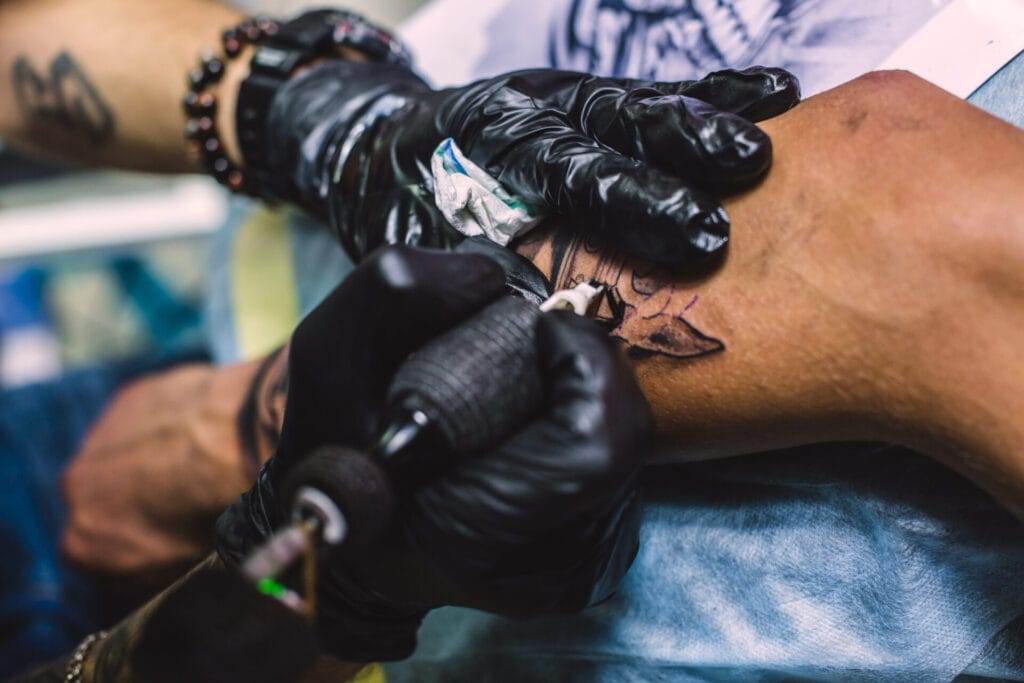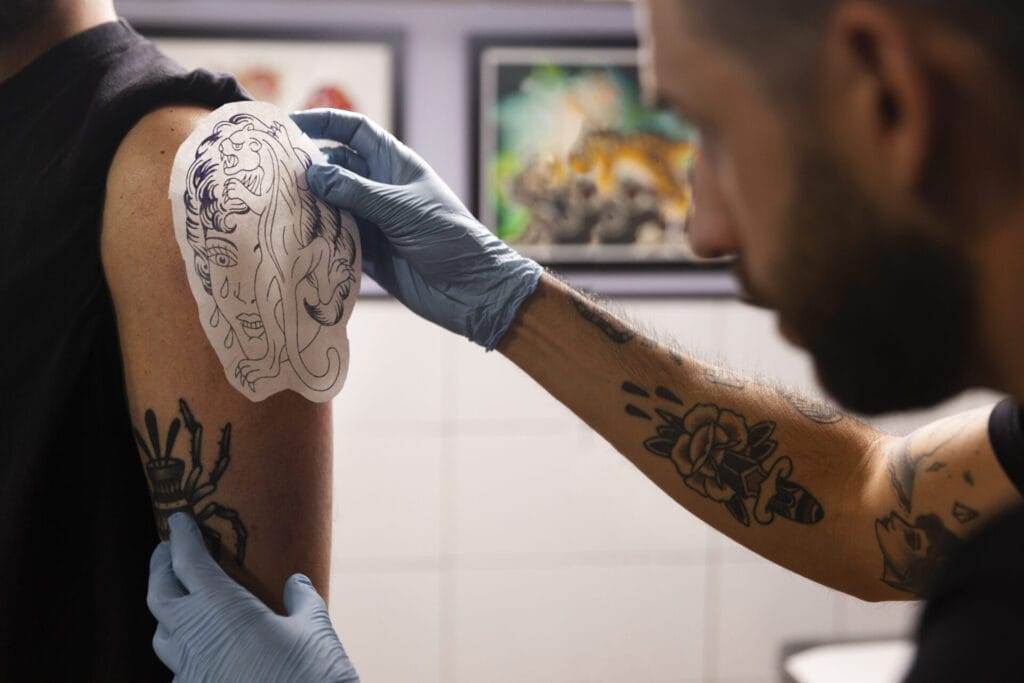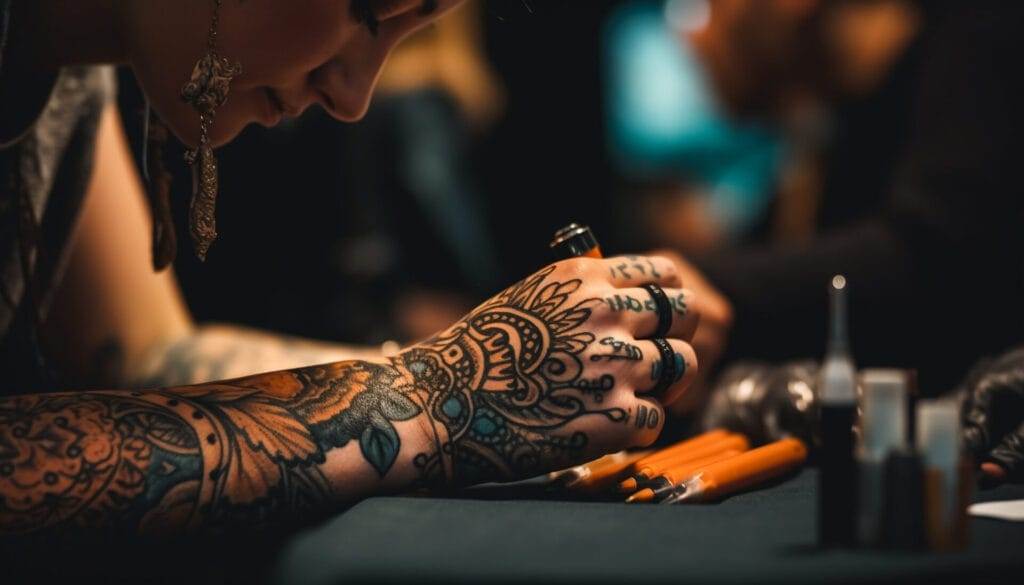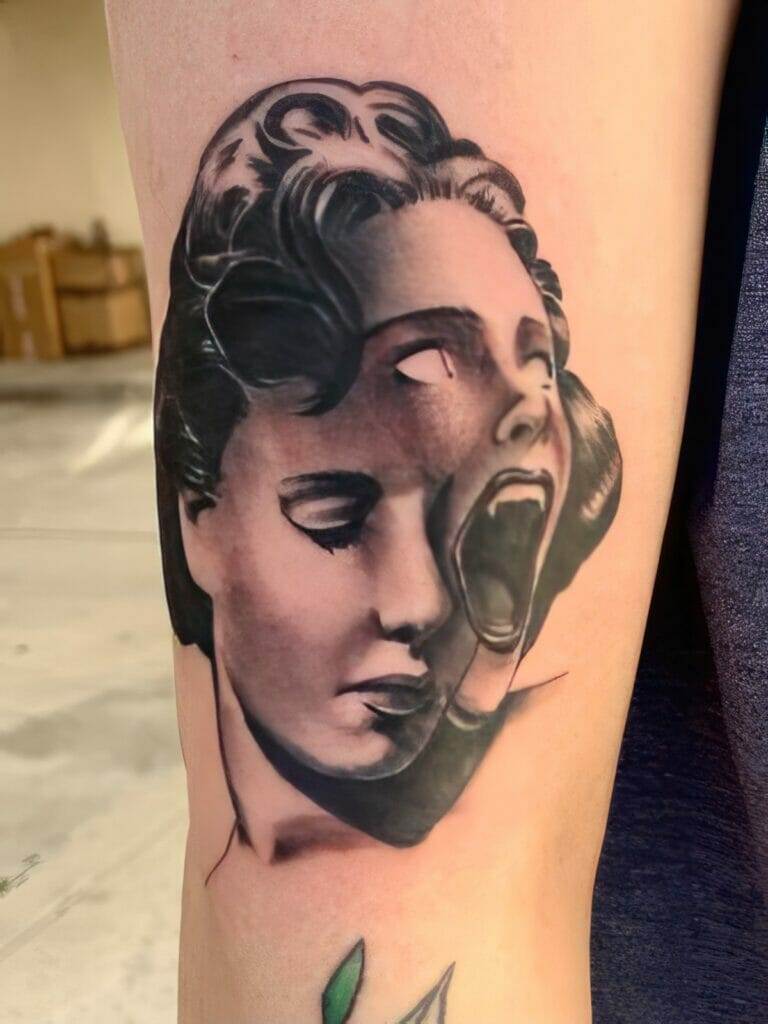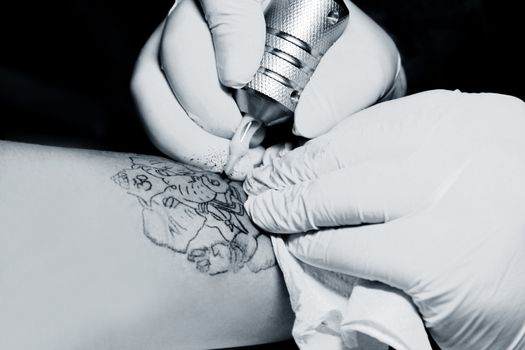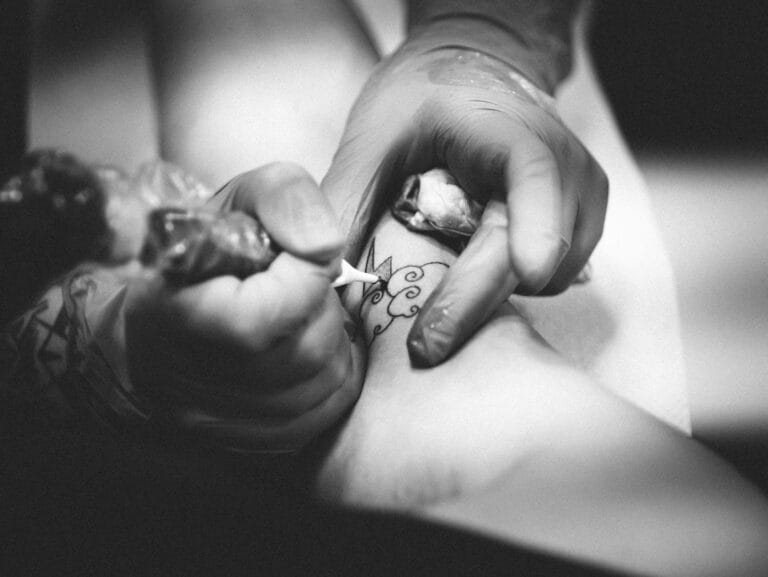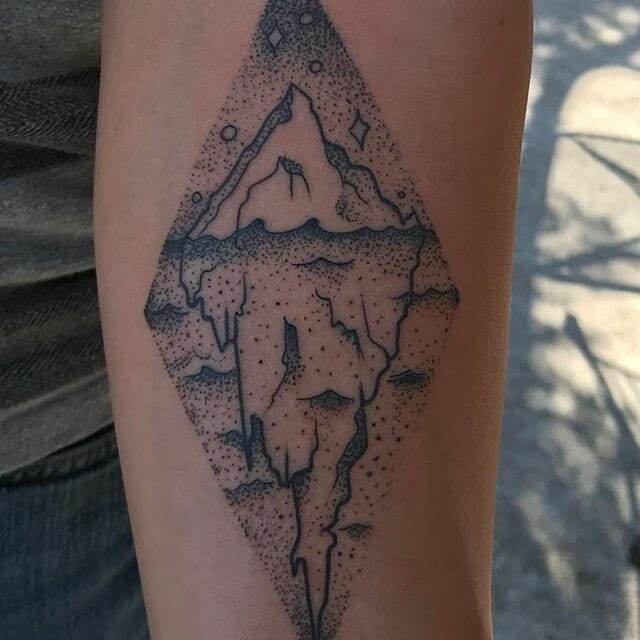
Dot and stippling tattoos are a unique style of tattooing that involves creating intricate designs using only dots or small, closely spaced dots. This technique creates a stunning visual effect, with the dots blending together to form shading, depth, and texture. Dot and stippling tattoos have gained popularity in recent years due to their distinct look and the skill required to create them.
Dot and stippling tattoos have become increasingly popular in the tattoo community, with many people opting for this style to stand out from traditional tattoo designs. The use of dots instead of lines or solid colors gives these tattoos a more subtle and delicate appearance. This style is often associated with minimalism and can be seen as a form of art in itself.
The History of Dot & Stippling Tattoos: From Ancient Times to Modern Day
The origins of dot and stippling tattoos can be traced back to ancient times. In many cultures, tattooing was a common practice, and dot and stippling techniques were used to create intricate designs on the skin. These tattoos were often seen as symbols of status, protection, or religious beliefs.
Over time, dot and stippling tattoos have evolved and adapted to different cultures and artistic styles. In Polynesia, for example, the art of tattooing has a long history, with intricate dot patterns being used to create meaningful designs. In Japan, the traditional art of irezumi incorporates dot and stippling techniques to create detailed and vibrant tattoos.
The Techniques Behind Dot & Stippling Tattoos: How Artists Create Intricate Designs
Creating dot and stippling tattoos requires precision and patience. Artists use specialized tools such as tattoo machines or hand-poking needles to carefully place each dot on the skin. The size and spacing of the dots determine the overall effect of the tattoo.
The process of creating a dot and stippling tattoo involves building up layers of dots to create shading and depth. Artists carefully consider the placement and density of the dots to achieve the desired effect. This technique requires a steady hand and a keen eye for detail.
Examples of intricate dot and stippling designs include mandalas, geometric patterns, animals, and portraits. These designs can be incredibly detailed, with thousands of dots coming together to form a cohesive image.
The Benefits of Dot & Stippling Tattoos: Why They’re Popular Among Tattoo Enthusiasts
Dot and stippling tattoos have gained popularity among tattoo enthusiasts for several reasons. Firstly, the unique look of these tattoos sets them apart from traditional tattoo styles. The use of dots creates a more subtle and delicate appearance, which appeals to those who prefer a minimalist aesthetic.
Secondly, dot and stippling tattoos have the potential to last longer than other tattoo styles. The small dots used in these tattoos tend to hold their shape and color over time, resulting in a tattoo that remains vibrant and detailed for years to come.
Lastly, dot and stippling tattoos are incredibly versatile. They can be adapted to various styles and designs, allowing artists to create custom pieces that reflect the individuality of their clients. Whether it’s a small minimalist design or a large intricate piece, dot and stippling techniques can be applied to create stunning tattoos.
The Different Styles of Dot & Stippling Tattoos: From Minimalist to Realistic
Dot and stippling tattoos come in various styles, ranging from minimalist designs to realistic portraits. Minimalist dot and stippling tattoos often feature simple geometric shapes or small symbols created using a few well-placed dots. These tattoos are popular among those who prefer a more subtle and understated look.
On the other end of the spectrum, realistic dot and stippling tattoos aim to recreate detailed images with incredible precision. Artists use varying sizes and densities of dots to create shading, texture, and depth, resulting in a tattoo that closely resembles a photograph or a painting.
Other styles of dot and stippling tattoos include mandalas, sacred geometry, and nature-inspired designs. These tattoos often incorporate intricate patterns and symmetrical compositions, creating visually stunning and spiritually meaningful pieces.
The Best Body Parts for Dot & Stippling Tattoos: Areas That Showcase the Details
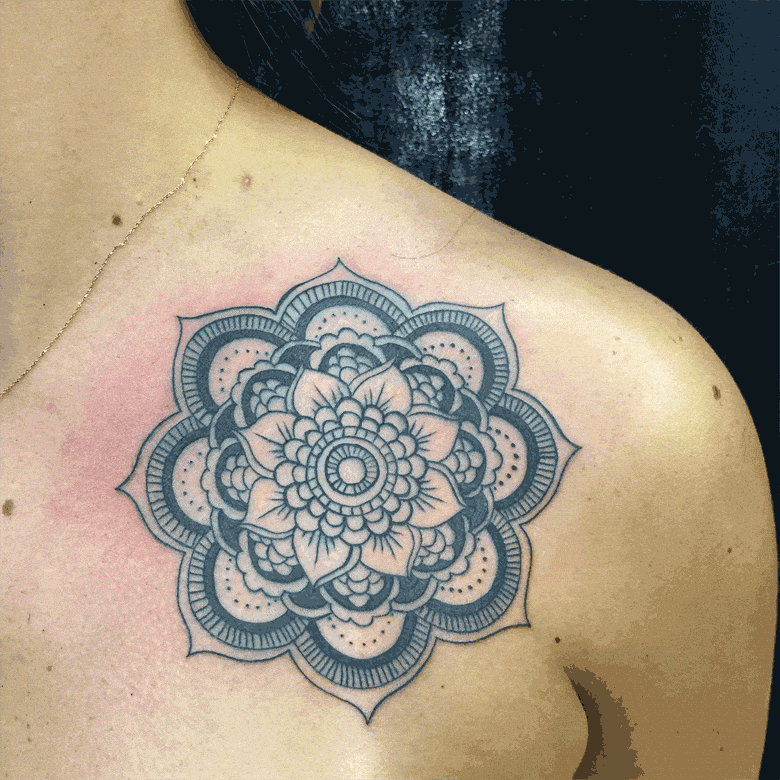
Dot and stippling tattoos can be placed on various body parts, but some areas are particularly well-suited for showcasing the intricate details of these tattoos. The arms and legs are popular choices, as they provide a larger canvas for artists to work with. The back is also a common location for dot and stippling tattoos, as it allows for larger and more complex designs.
For those who prefer smaller tattoos, the hands, fingers, and wrists are ideal locations. These areas can be adorned with minimalist dot and stippling designs that make a subtle yet impactful statement.
The neck and chest are also popular choices for dot and stippling tattoos. These areas allow for more visibility and can be used to create bold and eye-catching designs.
The Healing Process of Dot & Stippling Tattoos: Tips for Proper Aftercare
After getting a dot and stippling tattoo, it is crucial to follow proper aftercare instructions to ensure proper healing and minimize the risk of infection or complications. The healing process for dot and stippling tattoos is similar to that of other tattoo styles but requires extra care due to the intricate nature of the design.
During the healing process, it is essential to keep the tattoo clean and moisturized. Avoid exposing the tattoo to direct sunlight, excessive moisture, or abrasive materials. Follow the artist’s instructions regarding washing, applying ointment or lotion, and avoiding activities that may irritate the tattoo.
It is also important to resist the urge to scratch or pick at the tattoo as this can disrupt the healing process and potentially damage the design. If any signs of infection or complications arise, such as excessive redness, swelling, or discharge, it is crucial to seek medical attention promptly.
Common mistakes to avoid during the healing process include exposing the tattoo to excessive moisture, using harsh soaps or lotions, picking at scabs or flakes, and wearing tight or abrasive clothing that may rub against the tattoo.
The Future of Dot & Stippling Tattoos: How the Art Form is Evolving
Dot and stippling tattoos continue to evolve as artists experiment with new techniques and styles. With advancements in technology and equipment, artists now have access to more precise tools that allow for even finer details in their designs.
New techniques such as pointillism, which involves creating images using only dots of varying sizes and colors, are gaining popularity in the dot and stippling tattoo community. This technique allows for more intricate shading and color blending, resulting in stunningly realistic and vibrant tattoos.
The future of dot and stippling tattoos also includes the incorporation of other tattoo styles and elements. Artists are combining dot and stippling techniques with watercolor, blackwork, and even traditional tattoo styles to create unique and visually striking designs.
The Symbolism of Dot & Stippling Tattoos: What Different Designs Represent
Dot and stippling tattoos can hold various meanings depending on the design and the individual’s personal interpretation. Some common symbols found in dot and stippling tattoos include mandalas, which represent balance, unity, and spiritual growth, and sacred geometry, which symbolizes the interconnectedness of all things.
Animal designs often carry symbolic meanings as well. For example, a dot and stippling tattoo of a lion may represent strength, courage, or leadership, while a hummingbird design may symbolize joy, resilience, or freedom.
Dot and stippling tattoos can also be used to tell a story or commemorate significant events or people in one’s life. Each dot or element in the design can represent a specific moment or memory, creating a deeply personal and meaningful tattoo.
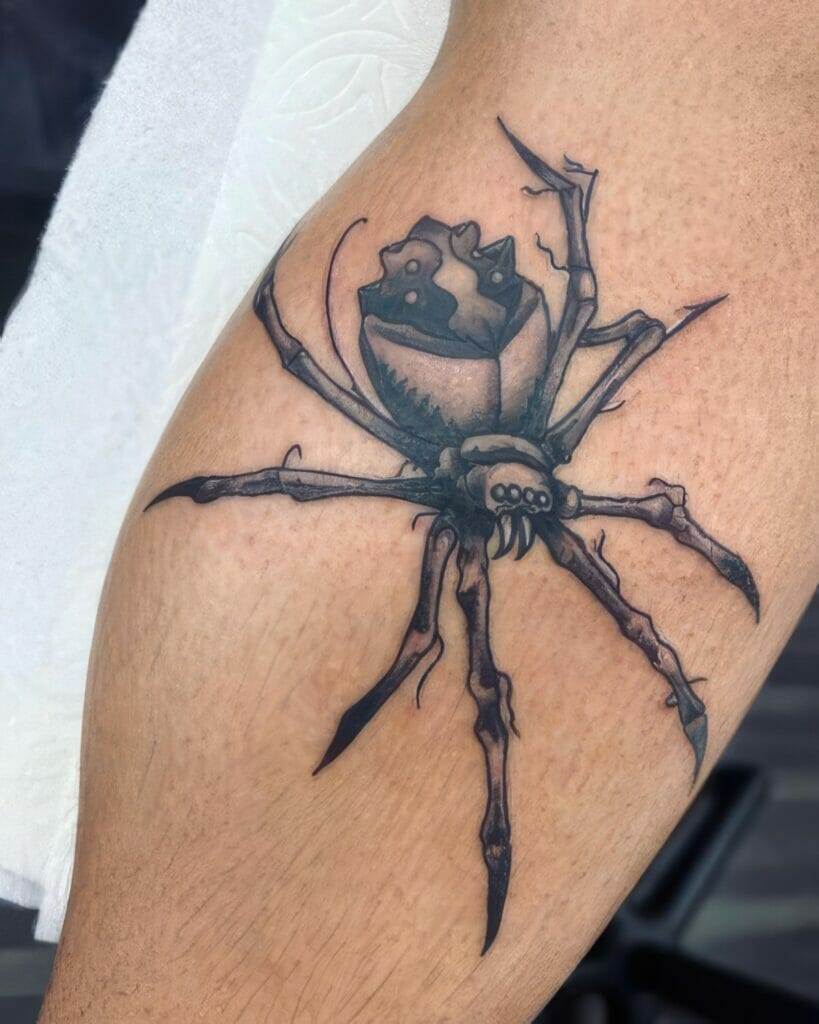
The Beauty and Intricacy of Dot & Stippling Tattoos
Dot and stippling tattoos are a unique form of art that requires skill, precision, and patience. The use of dots to create shading, depth, and texture results in stunningly intricate designs that stand out from traditional tattoo styles.
From ancient times to modern day, dot and stippling tattoos have evolved and adapted to different cultures and artistic styles. They continue to gain popularity among tattoo enthusiasts due to their unique look, longevity, versatility, and the ability to create custom designs that reflect individuality.
Whether it’s a minimalist design or a realistic portrait, dot and stippling tattoos offer endless possibilities for self-expression. As this art form continues to evolve, we can expect to see new techniques, styles, and symbolism emerge, further pushing the boundaries of what is possible with dot and stippling tattoos.

